Why Your Eyes Are Itching and Red
If your eyes feel like they’re on fire, water constantly, and you can’t stop rubbing them, you’re not alone. Around 40% of people in the U.S. deal with eye allergies every year, and it’s not just pollen season-it’s dust, pet dander, mold, and even some cosmetics. This isn’t a cold or an infection. It’s allergic conjunctivitis, an overreaction of your immune system to harmless stuff floating in the air.
Unlike pink eye caused by viruses or bacteria, allergic conjunctivitis doesn’t spread. You won’t catch it from someone else. But it sure feels like it’s attacking you. The main culprits? Histamine and other chemicals released when allergens touch your conjunctiva-the thin, clear layer covering your eyeball. That’s what triggers the itch, the redness, the swelling, and the watery eyes.
Studies show 92% of people with eye allergies report intense itching as their worst symptom. Eighty-eight percent get red eyes. Nearly 85% say their eyes water nonstop. And if your eyelids puff up or you feel like you’re squinting in bright light, that’s also part of the picture. Dark circles under your eyes? Those are called “allergic shiners,” and they’re a real sign your body’s fighting something.
How to Tell It’s Allergy, Not Infection
It’s easy to confuse eye allergies with pink eye. But there’s a big difference. If you have a yellow or green gooey discharge, it’s likely bacterial. If your eyes are crusty in the morning and feel gritty, it’s probably viral. Both can cause redness, but they don’t usually make your eyes itch this badly.
Eye allergies? The discharge is clear and watery. The itch is the #1 symptom. You’ll notice it gets worse when you’re outside on a windy day, after hugging your dog, or when you wake up next to an open window. If your symptoms line up with pollen counts or pet exposure, it’s almost certainly allergies.
The American Academy of Ophthalmology says you need at least two of these: itching, redness, tearing, or swelling-and they must get worse with allergen exposure. No discharge? No fever? No pain? That’s your clue.
Antihistamine Eye Drops: What Actually Works
When it comes to quick relief, antihistamine eye drops are the go-to. They block histamine-the chemical that makes your eyes burn and itch. But not all drops are the same.
First-generation drops like Naphcon-A (pheniramine) work fast-within 3 to 5 minutes. But they wear off quickly. You’ll need to use them every 4 to 6 hours. And about 25% of users feel a sharp sting when they put them in. Not ideal if you’re already in pain.
Second-generation drops like olopatadine (Pataday), ketotifen (Zaditor, Alaway), and epinastine (Elestat) are better. They don’t just block histamine-they also stop mast cells from releasing it in the first place. That’s called a dual-action effect. And they last longer.
Pataday Once Daily Relief (olopatadine 0.2%) is designed to work for up to 16 hours. In clinical trials, users saw itching drop from a score of 2.8 to 0.7 on a 4-point scale within just 3 minutes. That’s fast. And you only need one drop per eye, once a day.
Zaditor (ketotifen 0.025%) works almost as fast-within 3 minutes-and is much cheaper. But it doesn’t last as long. Most people need to use it twice a day. A 2022 head-to-head study found Pataday beat Zaditor in lasting power at the 16-hour mark. But Zaditor kicked in faster.
Cost, Brands, and Generics
Price matters. A 2.5mL bottle of generic ketotifen costs about $12.99 at major U.S. pharmacies. The same size of brand-name Pataday? $42.99. That’s a big gap.
But here’s the catch: many insurance plans cover Pataday as a tier-2 prescription, bringing your copay down to $15-$40. If you’re using it daily, the cost difference adds up fast. For people without insurance, generics like Alaway or Zaditor are a smart pick. They’re effective and affordable.
Amazon reviews show Pataday holds a 4.4/5 rating, with users saying, “Works within minutes and lasts all day.” Zaditor sits at 4.1/5, with comments like, “Great value, but I need to reapply by lunch.”
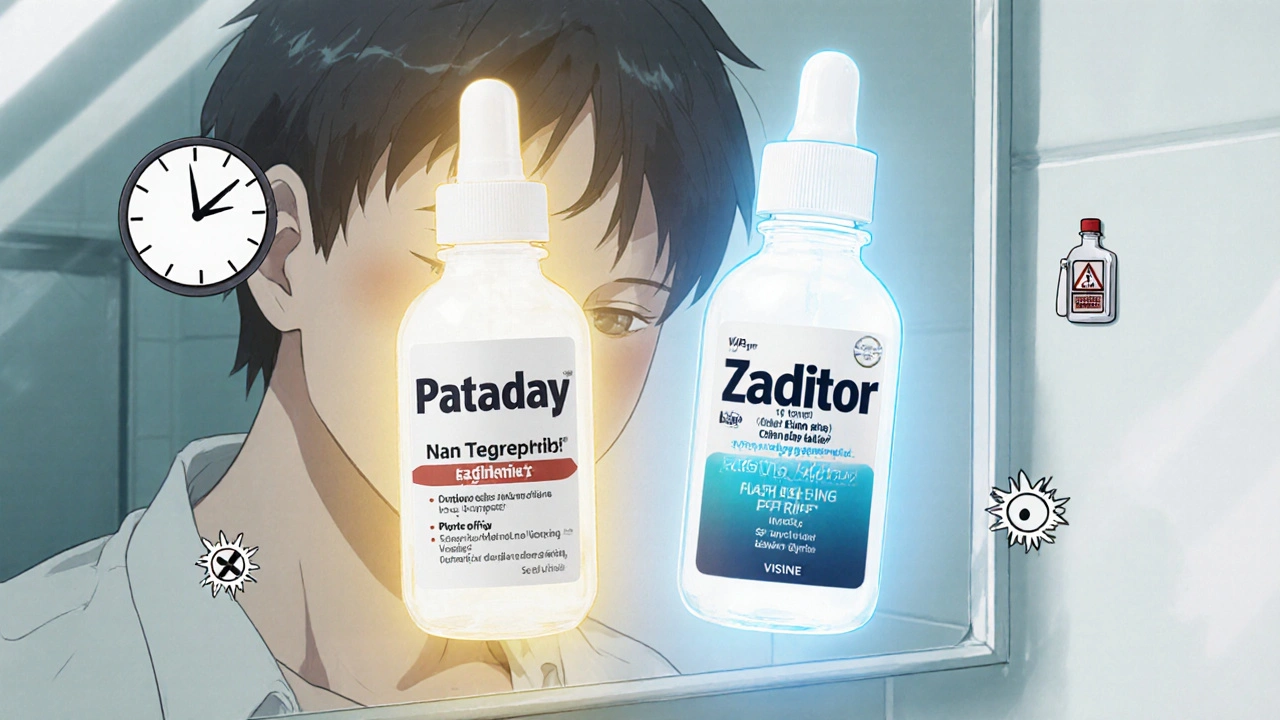
What NOT to Use
Decongestant drops like Visine-A or Clear Eyes look tempting-they make redness vanish fast. But they’re a trap. These drops shrink blood vessels to reduce redness, but they don’t touch the itch or swelling. And if you use them for more than 3 days, your eyes bounce back worse than before. This is called rebound hyperemia.
A 2023 study found 65% of people who used decongestant drops for a week ended up with even redder, more irritated eyes. One Drugs.com reviewer wrote: “Used Visine-A for 5 days straight. My eyes got worse than ever.” That’s not a miracle cure-it’s a cycle of dependence.
Oral antihistamines like Zyrtec or Claritin help with runny noses and sneezing, but they can dry out your eyes. About 40% of users report worse dryness and discomfort. If your eyes are already watering, adding a drying pill might make things worse.
When to Consider Stronger Options
If antihistamine drops aren’t cutting it, your doctor might suggest corticosteroid drops like loteprednol. These are powerful. They can calm severe inflammation fast. But they’re not for daily, long-term use. Using them for more than 2 weeks can raise your eye pressure and increase your risk of cataracts.
For people with year-round allergies, allergy shots or sublingual tablets (allergy immunotherapy) are the only treatment that changes the course of the disease. Studies show 60-80% of users see big improvements after 3-5 years. But it takes 6-12 months just to start noticing results. It’s a long game.
How to Use Eye Drops Right
Even the best drops won’t help if you use them wrong. Here’s how to do it:
- Tilt your head back and look up.
- Pull down your lower eyelid to make a little pocket.
- Hold the bottle close to your eye-don’t touch the tip to your eye or lashes.
- Squeeze one drop into the pocket.
- Close your eye gently for 30 seconds. Press the inner corner near your nose to keep the drop from draining into your throat.
Doing this right cuts contamination risk by 75%, according to ophthalmologists. And it keeps the medicine where it belongs-on your eye.
Also, don’t use drops that are more than a month old after opening. Preservatives break down. Bacteria can grow. That’s a recipe for infection.
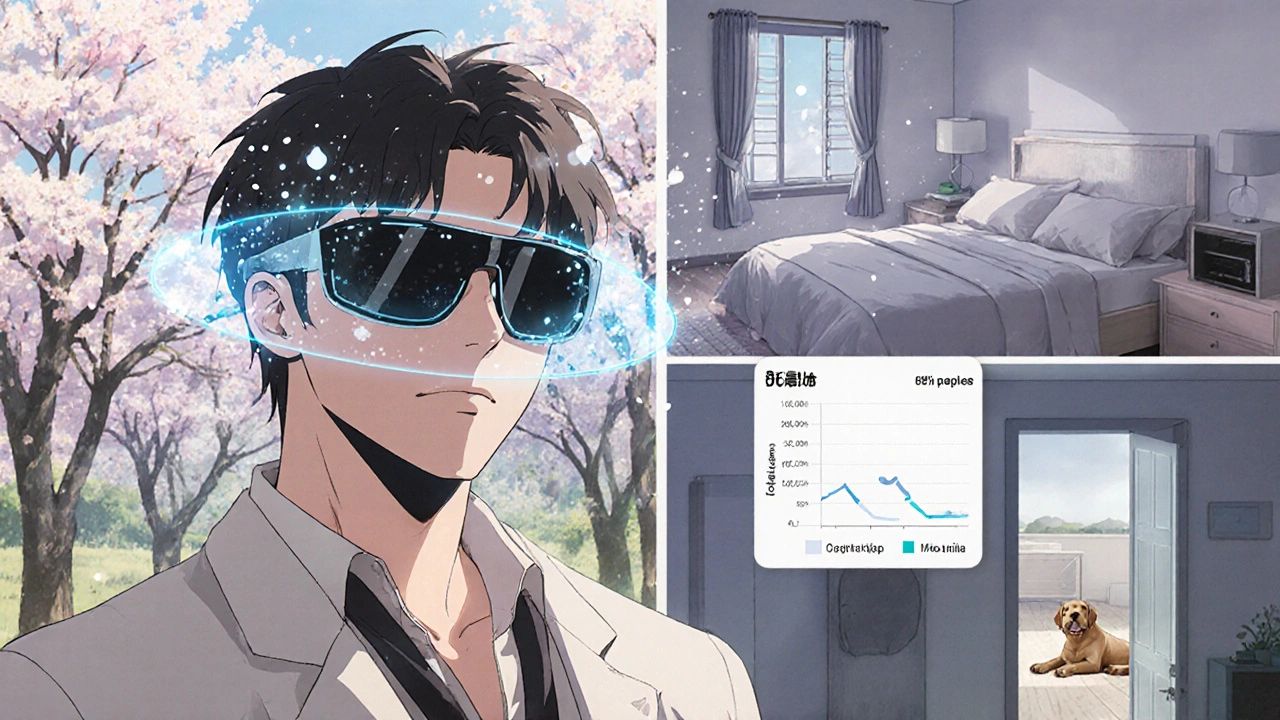
Beyond Drops: Real-Life Tips
Medicine helps, but avoiding triggers helps more.
- Wash your face and hands after being outside. That alone reduces symptoms by 30%.
- Use preservative-free artificial tears 4-6 times a day. They flush out allergens before they trigger a reaction.
- Wear wraparound sunglasses outdoors. They block up to 50% of airborne pollen.
- Keep windows closed during peak pollen season (April-June in most U.S. regions). Use AC instead.
- Change your pillowcase every 2-3 days. Dust mites love old fabric.
- If you have pets, don’t let them sleep in your bedroom. Pet dander clings to fur and spreads fast.
What’s Next in Eye Allergy Treatment
The field is evolving. In 2023, the FDA approved Bepreve (bepotastine 1.5%), another once-daily drop that matches Pataday’s effectiveness. Newer drugs in development aim to last even longer-like a tiny implant that releases medicine for 3 months.
Researchers are also testing biologics that target specific inflammation pathways (like IL-4 and IL-13). These could be game-changers for severe cases. And with pollen counts up 21% since 1990 due to climate change, demand for better treatments is growing fast.
When to See a Doctor
If your symptoms last more than 2 weeks despite using drops correctly, it’s time to see an eye doctor. About 20% of people who think they have allergies actually have dry eye disease, blepharitis, or another condition that looks similar. Treating the wrong thing makes it worse.
Also, if you notice vision changes, eye pain, or light sensitivity beyond mild discomfort, don’t wait. These aren’t typical allergy signs. Get checked.
Final Takeaway
Eye allergies are annoying, but they’re manageable. You don’t need to suffer through every spring and fall. Start with a good antihistamine/mast cell stabilizer drop-like Pataday or Zaditor. Use it correctly. Combine it with simple avoidance steps. And ditch the decongestants.
It’s not about finding the cheapest option. It’s about finding what works for you. For some, that’s a generic. For others, it’s the once-daily prescription. Either way, relief is possible. You just need the right plan.

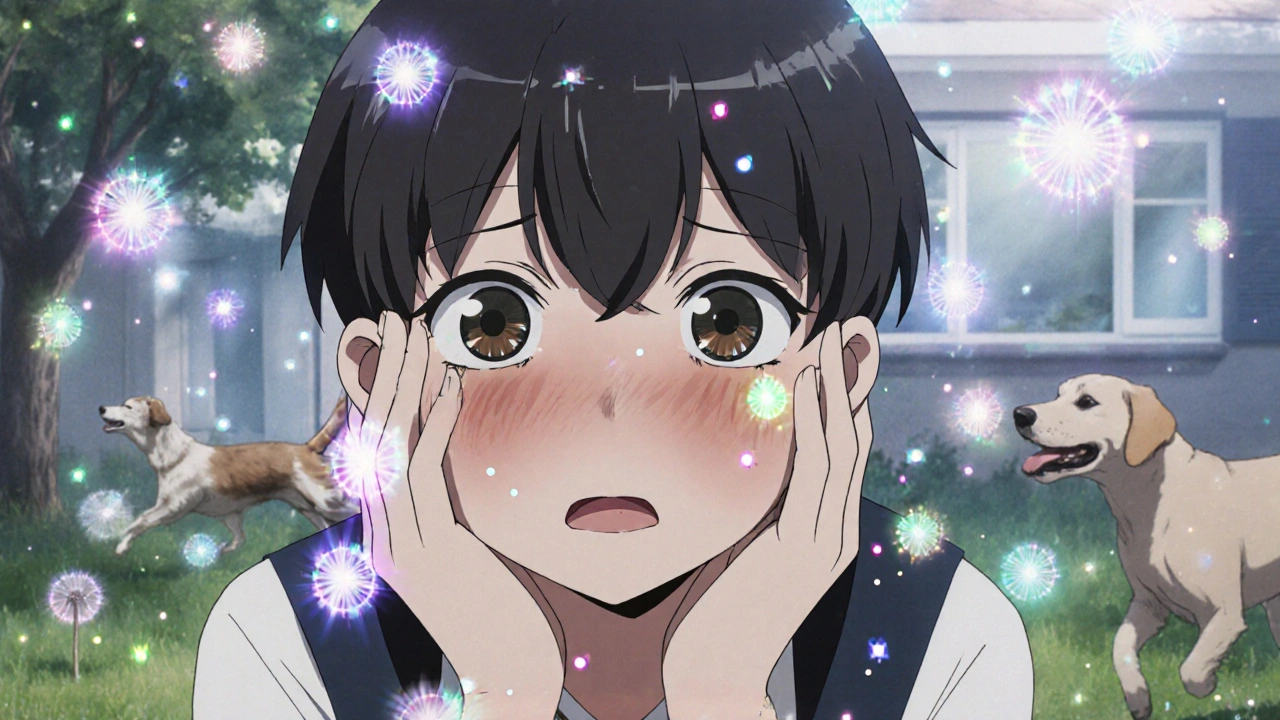

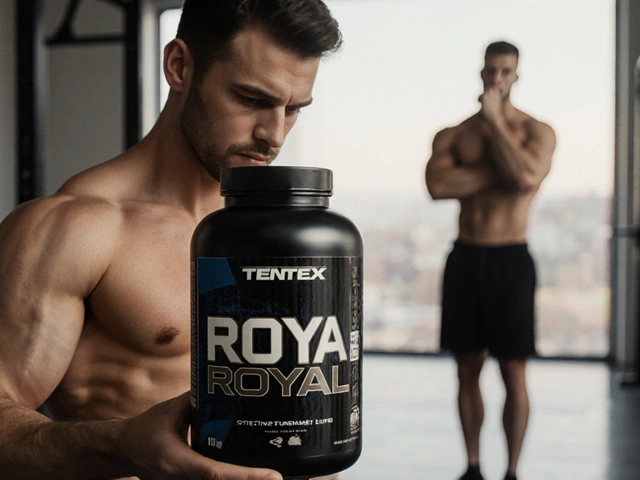


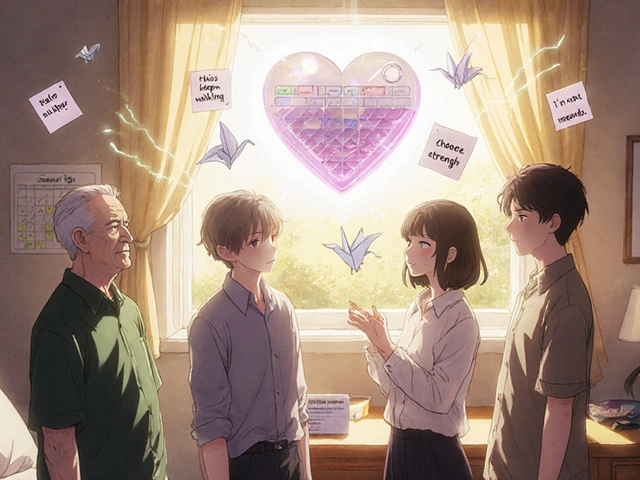

Cynthia Springer
November 27, 2025 AT 11:06Rachel Whip
November 27, 2025 AT 16:14Ezequiel adrian
November 28, 2025 AT 21:56Ali Miller
November 29, 2025 AT 18:57JAY OKE
December 1, 2025 AT 06:09james thomas
December 2, 2025 AT 12:32Deborah Williams
December 3, 2025 AT 00:14Kaushik Das
December 3, 2025 AT 01:09Asia Roveda
December 4, 2025 AT 03:02Micaela Yarman
December 4, 2025 AT 22:56mohit passi
December 5, 2025 AT 20:12Aaron Whong
December 7, 2025 AT 06:15